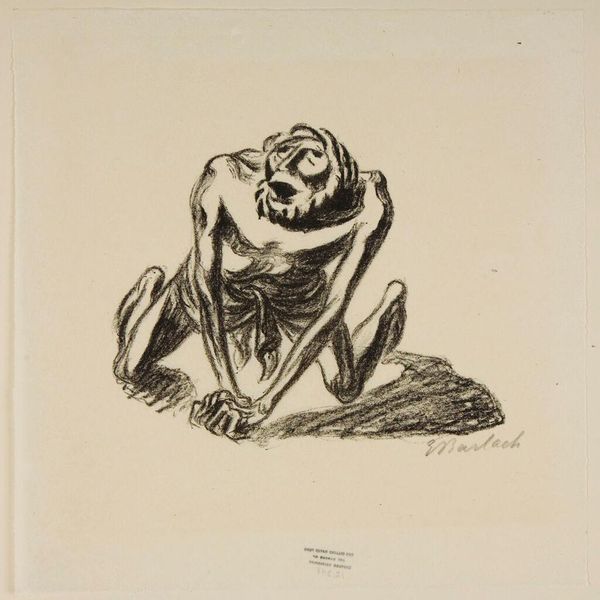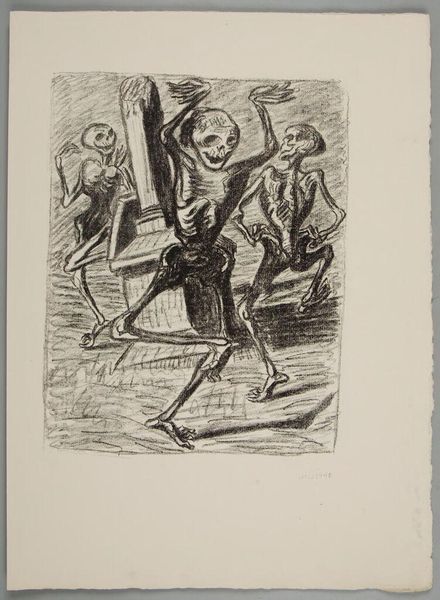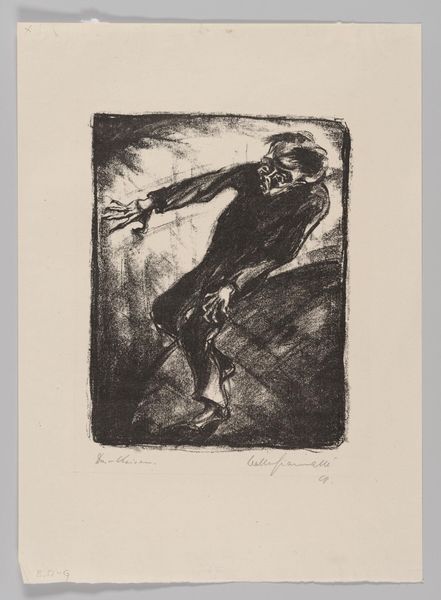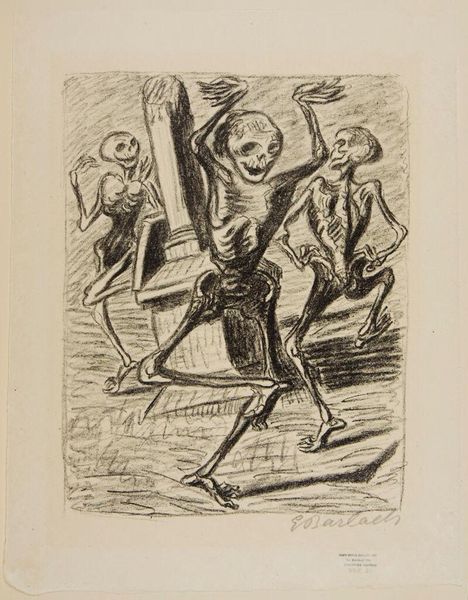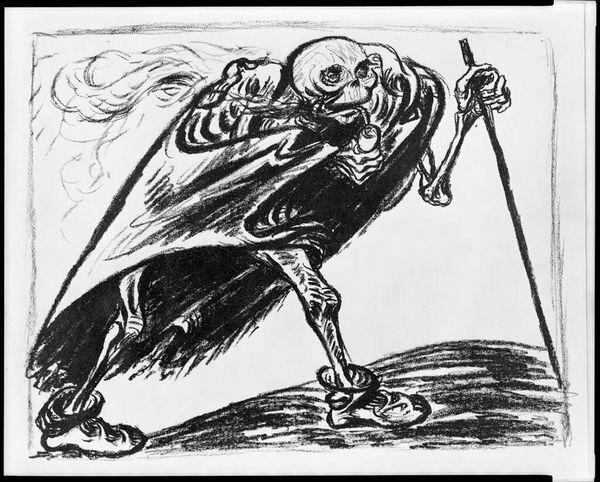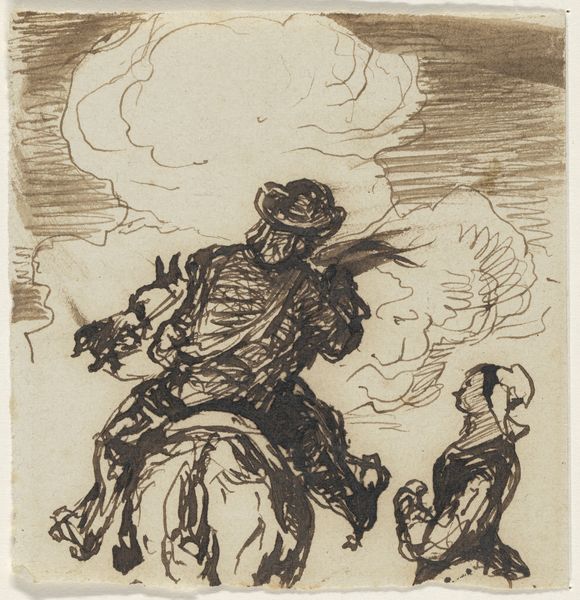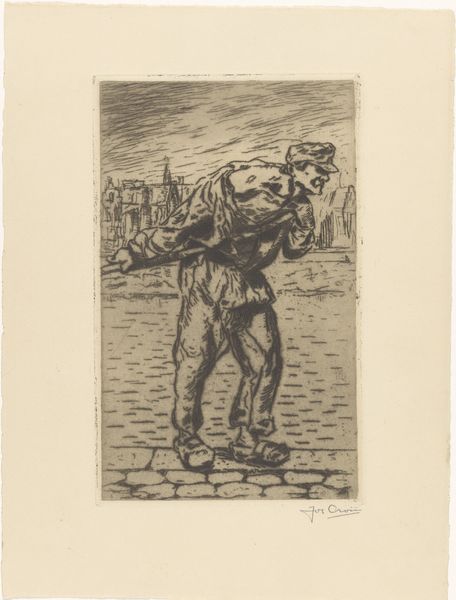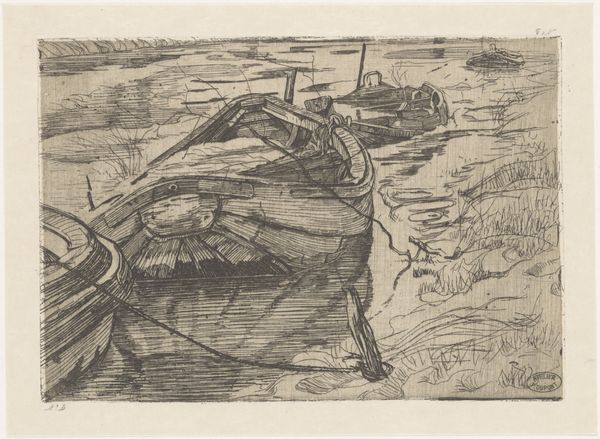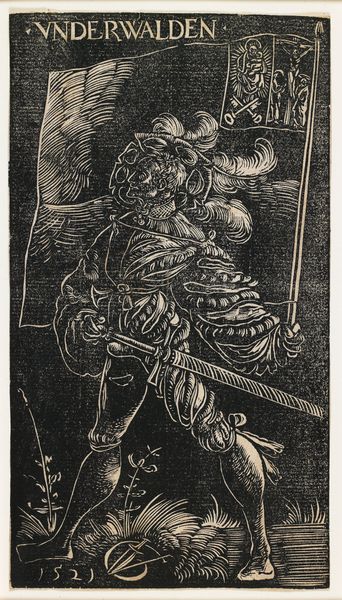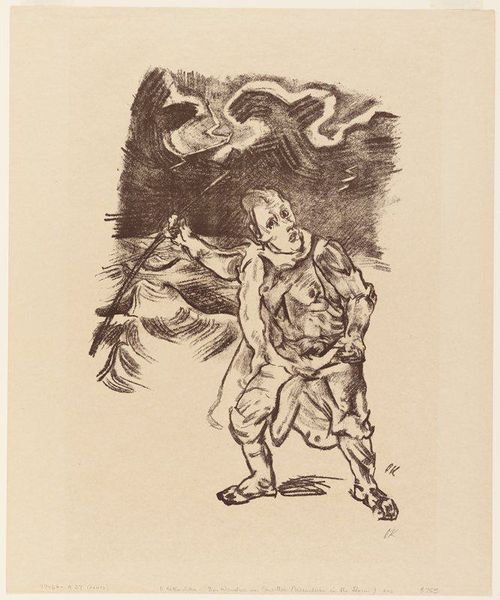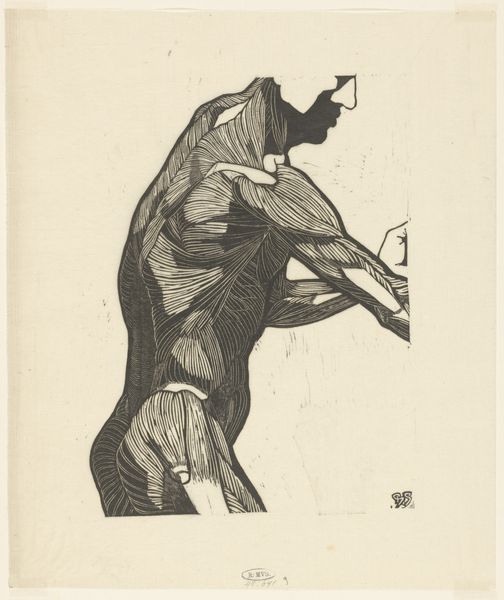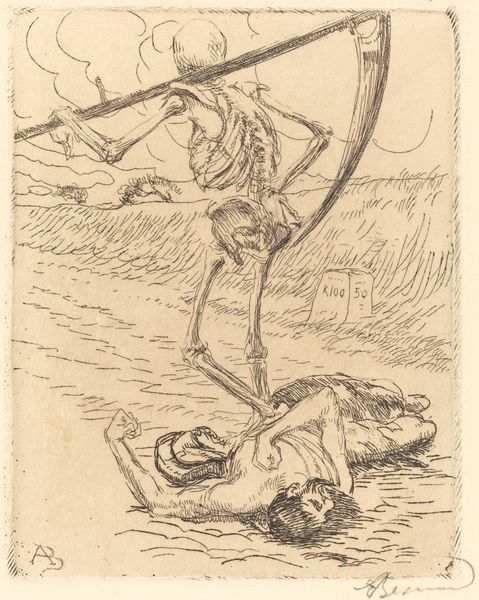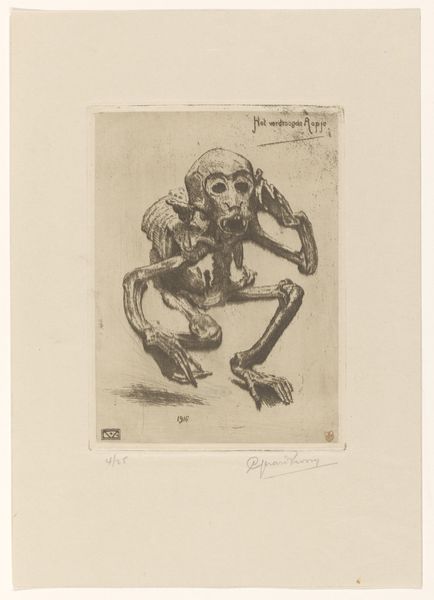
Dimensions: sheet: 34.5 × 41 cm (13 9/16 × 16 1/8 in.)
Copyright: National Gallery of Art: CC0 1.0
Curator: Ernst Barlach’s ink drawing, "Wandering Death," created in 1923, is a powerful example of German Expressionist printmaking. Editor: The overwhelming feeling I get is one of utter resignation. The figure is hunched, cloaked, clearly weary. Curator: As a printmaker, Barlach would have carefully considered the impact of stark contrasts, likely working with woodcuts to create the image and exploit the way in which the gouges accepted ink and made sharp delineation on the paper surface. Editor: The skeletal figure itself is a potent symbol, but it is his context within a post-World War I environment that gives it resonance. Mass death haunted society then; bodies and psyches alike felt the repercussions. Is this a metaphor for societal trauma itself trudging forward? Curator: I agree. I'm also struck by the garment. It obscures much of the body, but the dense layering of ink suggests the texture and weight, as if death carries its own heavy burden, possibly one constructed from tangible, earthly items like a thick, wool cloak made in an artisan's studio. Editor: Consider too the visual language—Barlach made many war monuments. His training as a sculptor no doubt had an influence, his visual symbolism representing complex existential issues and making this print far more than just an aesthetic creation; it's a political statement. This depiction of death’s inescapable journey isn’t simply morbid—it's a call for societal introspection. Curator: Indeed, tracing Barlach’s work across various media highlights how interconnected artistic practices can inform one another. And the specific, economical use of ink on paper allowed for greater distribution, widening the circle of impact. Editor: Reflecting on Barlach's "Wandering Death" reminds me of how art grapples with enduring anxieties, offering perspectives on mortality and, perhaps, motivating resistance. Curator: Seeing it as a commentary on the process of producing collective memory is important. It shifts how we regard not just art but the tangible traces of historical events, and human existence in general.
Comments
No comments
Be the first to comment and join the conversation on the ultimate creative platform.
